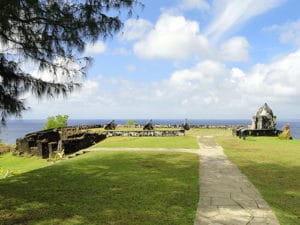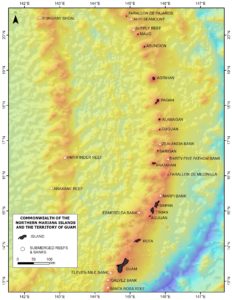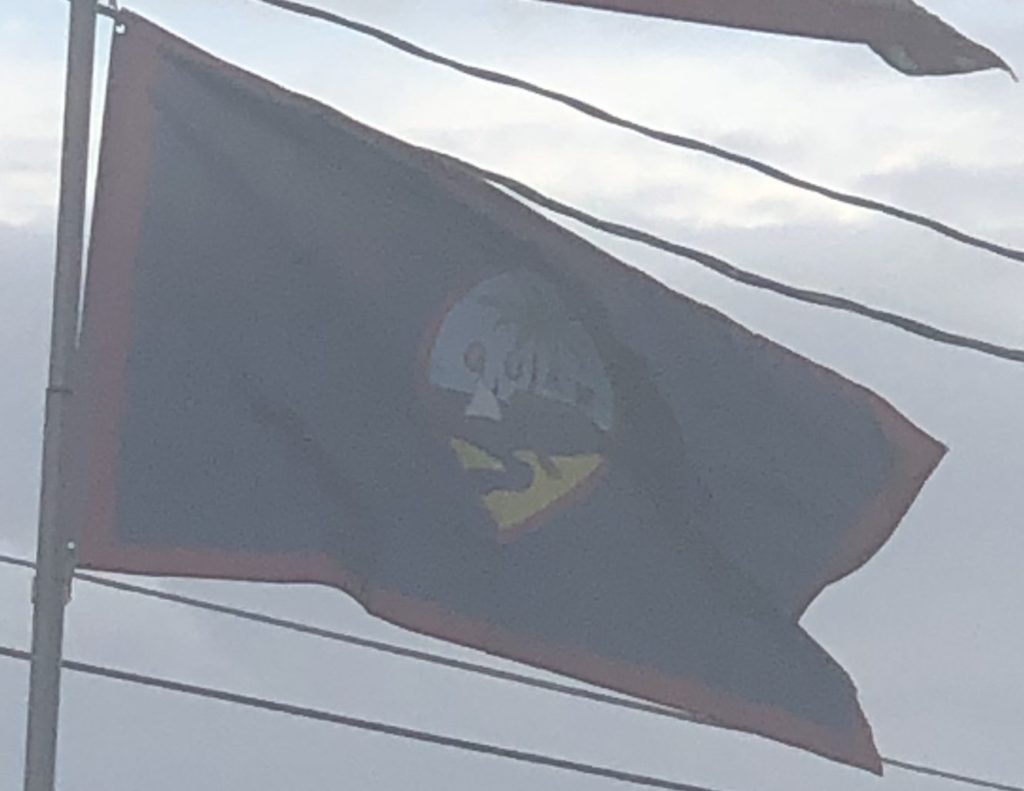
Guam is the biggest single segment of Micronesia, the largest islands between the island of Kyushu (Japan), New Guinea, the Philippines, and the Hawaiian Islands.
Spanish colonization commenced on June 15, 1668, with the arrival of Diego Luis de San Vitores and Pedro Calungsod, who established the first Catholic church. The islands were part of the Spanish East Indies governed from the Philippines, which were in turn part of the Viceroyalty of New Spain based in Mexico City. Other reminders of colonial times include the old Governor’s Palace in Plaza de España and the Spanish Bridge, both in Hagatña. Guam’s Cathedral Dulce Nombre de Maria was formally opened on February 2, 1669, as was the Royal College of San Juan de Letran. Guam, along with the rest of the Mariana and Caroline Islands, were treated as part of Spain’s colony in the Philippines. While the island’s Chamorro culture has indigenous roots, the cultures of both Guam and the Northern Marianas have many similarities with Spanish culture due to three centuries of Spanish rule.
Internal Conflicts:
Intermittent warfare lasting from July 23, 1670, until July 1695, plus the typhoons of 1671 and 1693, and in particular the smallpox epidemic of 1688, reduced the Chamorro population from 50,000 to 10,000, finally to less than 5,000. Captain Juan de Santiago started a campaign to conquer the island, which was continued by the successive commanders of the Spanish forces.
After his arrival in 1674, Captain Damian de Esplana ordered the arrest of rebels who attacked the population of certain towns. Starting in June 1676, the first Spanish Governor of Guam, Capt. Francisco de Irrisarri y Vinar, controlled internal affairs more strictly than his predecessors in order to curb tensions. He also ordered the construction of schools, roads and other infrastructure. Later, Capt. Jose de Quiroga arrived in 1680 and continued some of the development projects started by his predecessors. Quiroga brought some natives from the northern islands to Guam, ordering the population to live in a few large villages. By July 1695, Quiroga had completed the conquest of Guam, Rota, Tinian and Aguigan.

Expulsion of the Jesuits:
On February 26, 1767, Charles III of Spain issued a decree confiscating the property of the Jesuits and banishing them from Spain and her possessions. As a consequence, the Jesuit fathers on Guam departed on November 2, 1769, on the schooner Nuestra Señora de Guadalupe, abandoning their churches, rectories and ranches.
The arrival of Governor Don Mariano Tobias, on September 15, 1771, brought agricultural reforms, including making land available to the islanders for cultivation, encouraged the development of cattle raising, imported deer and water buffalo from Manila, donkeys and mules from Acapulco, established cotton mills and salt pans, free public schools, and the first Guam militia. Later, he was transferred to Manila in June 1774.
Post-Napoleonic Era:
Following the Napoleonic Wars, many Spanish colonies in the Western Hemisphere had become independent, shifting the economic dependence of Guam from Mexico to the Philippines. Don Francisco Ramon de Villalobos, who became governor in 1831, improved economic conditions including the promotion of rice cultivation and the establishment of a leper hospital.
